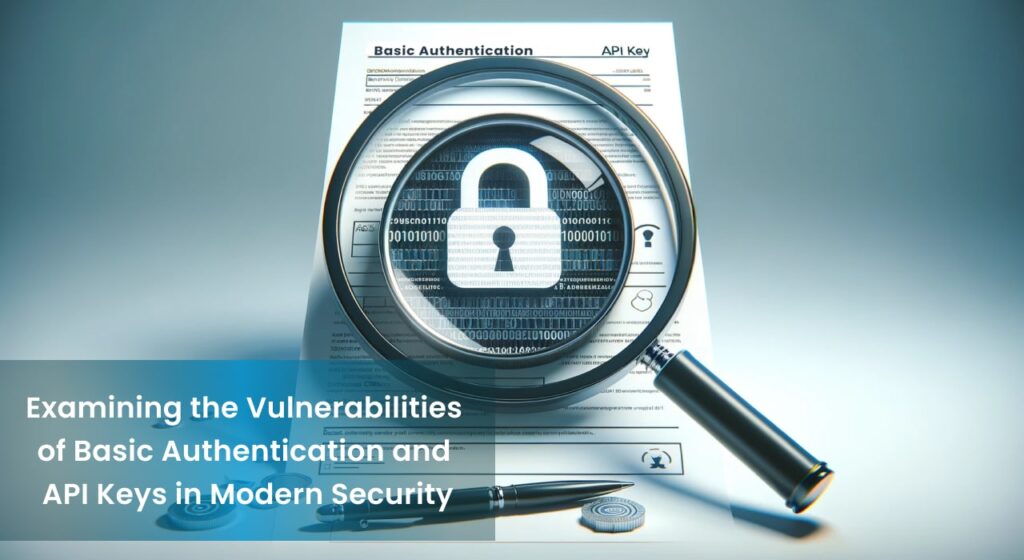
Australia’s digital landscape is undergoing a significant transformation, driven by the explosive growth of Application Programming Interfaces (APIs). These software intermediaries seamlessly connect disparate systems and applications, enabling the exchange of data and functionality at an unprecedented scale. A recent report by Gartner predicts that by 2025, over 80% of web traffic will be driven by APIs, highlighting their critical role in powering today’s digital ecosystems.
However, this burgeoning reliance on APIs has also brought forth a concerning trend – a sharp rise in API security breaches. In 2023, the Australian Cyber Security Centre (ACSC) reported a staggering 72% increase in API-related cyberattacks, with attackers exploiting vulnerabilities to gain unauthorized access to sensitive data. A recent high-profile case involved a major Australian retailer experiencing a data breach through a compromised API, exposing the personal information of millions of customers. This incident underscores the immense potential damage associated with API security failures.
Fortunately, a powerful solution exists to fortify API security: Identity and Access Management (IAM). IAM acts as a digital gatekeeper, meticulously controlling access to APIs by verifying user identities and enforcing authorization policies. By implementing robust IAM controls, Australian organizations can significantly reduce the risk of unauthorized access and data breaches.
This comprehensive guide delves into the critical role of IAM in safeguarding APIs. We will explore the various types of IAM controls, their benefits for Australian organizations, and provide practical steps for implementing a robust IAM strategy for your APIs. By leveraging this knowledge, you can effectively shield your APIs from evolving cyber threats and ensure the secure exchange of data within your digital ecosystem.
The Evolving Threat Landscape for APIs in Australia

Australian businesses are increasingly embracing Application Programming Interfaces (APIs) as the cornerstone of their digital strategies. These agile software intermediaries seamlessly connect internal systems and external applications, fostering a collaborative and data-driven environment. This interconnectedness, however, creates a vast attack surface for cybercriminals. The Australian Cyber Security Centre’s (ACSC) 2023 Annual Cyber Threat Report paints a concerning picture, revealing a 72% year-on-year increase in API-related cyberattacks targeting Australian organizations.
These attacks exploit vulnerabilities within APIs to gain unauthorized access to sensitive data. Common tactics include brute-force attacks, where attackers systematically try every possible combination of characters to crack login credentials. Credential stuffing, another prevalent threat, involves leveraging stolen usernames and passwords from other breaches to infiltrate APIs with weak authentication mechanisms. Man-in-the-middle attacks further complicate the landscape. Here, attackers intercept communication between a user and an API, potentially stealing data or manipulating requests for malicious purposes.
The consequences of API security breaches can be devastating for Australian organizations. Sensitive data such as customer information, financial records and intellectual property can be compromised, leading to significant financial losses. Furthermore, reputational damage can be severe, eroding customer trust and hindering future business prospects. By proactively addressing API security vulnerabilities, Australian organizations can safeguard their valuable assets and maintain a competitive edge in the digital marketplace.
Traditional Authentication Methods &Their Shortcomings for APIs

As APIs became the backbone of Australian business operations, traditional authentication methods have struggled to keep pace with the evolving security landscape. Basic authentication, a method that transmits usernames and passwords directly within the API request, offers a rudimentary level of security. While seemingly straightforward, it suffers from a critical flaw: the credentials are Base64 encoded, a weak obfuscation technique easily cracked by attackers. This vulnerability exposes organizations to brute force attacks, where automated tools relentlessly bombard the API with login attempts until a valid combination is discovered.
Similarly, API keys, unique identifiers assigned to authorized users or applications, offer limited security. While they eliminate the need for usernames and passwords within the request itself, API keys are often static and can be intercepted or stolen through various means. These compromised credentials can then be exploited by unauthorized actors to gain access to sensitive data or functionalities within the API.
The limitations of these traditional methods highlight the need for a more robust and multi-layered approach to API security. A singular layer of authentication simply isn’t enough to withstand the ever sophisticated tactics employed by cybercriminals. By implementing a more comprehensive security strategy, organizations can effectively safeguard their APIs and the critical data they transmit.
Identity & Access Management : A Powerful Shield for APIs

In the ongoing battle to secure APIs, Identity and Access Management (IAM) emerges as a powerful defense mechanism. Within the context of API security, IAM acts as a digital bouncer, meticulously verifying the identity of users and applications seeking access to APIs. This verification process hinges on three core principles: user identification, authentication and authorization.
The Bedrock of IAM: Identification, Authentication and Authorization
- User Identification: IAM establishes a clear understanding of who or what is attempting to access an API. This can involve user accounts, application identifiers, or device fingerprints.
- Authentication: Next, robust authentication methods, such as multi-factor authentication (MFA), ensure the legitimacy of the identified entity. MFA goes beyond traditional username and password verification, requiring an additional factor, like a one-time code sent to a mobile device, to confirm user identity.
- Authorization: Finally, IAM dictates the level of access granted. This authorization process determines what actions a user or application is permitted to perform within the API.
Empowering Granular Control: IAM in Action
By enforcing these principles, IAM empowers organizations to exert granular control over API access. Gone are the days of granting blanket access with a single static credential. IAM allows administrators to define specific permissions for various user roles within the system. For instance, a developer role might be granted permission to read data from an API, while a system administrator role might have the privilege to modify data or perform administrative functions.
This granular control ensures that only authorized users and applications have access to the specific data and functionalities they require within the API. This significantly reduces the attack surface and minimizes the potential damage caused by unauthorized access.
The Diverse Arsenal of IAM: Tools for Effective Control
To achieve this level of control, IAM utilizes a diverse range of tools and techniques. A comprehensive table outlining some of the most common IAM controls for API security is provided below.
| IAM Control | Description |
|---|---|
| User Authentication | Techniques like multi-factor authentication (MFA) to verify user identity. |
| Role-Based Access Control (RBAC) | Defines access permissions based on user roles within the system. |
| Attribute-Based Access Control (ABAC) | Grants access based on user attributes and context in addition to roles. |
| API Gateways | Act as centralized hubs for managing API access and enforcing security policies. |
| Tokenization | Short-lived access tokens are issued instead of long-term credentials like API keys. |
By leveraging this IAM controls strategically, organizations can establish a robust defense against API security threats. This empowers them to confidently navigate the evolving digital landscape, ensuring the secure exchange of data within their APIs.
Benefits of Implementing Strong IAM Controls for APIs in Australia

For Australian organizations navigating the dynamic digital landscape, fortifying API security with robust Identity and Access Management (IAM) practices delivers a multitude of benefits. By implementing a comprehensive IAM strategy, organizations can significantly bolster their defenses against unauthorized access and data breaches, fostering a more secure and trustworthy digital ecosystem.
The cornerstone of this enhanced security lies in IAM’s ability to establish granular control over API access. Traditional authentication methods often provide a single point of failure, leaving APIs vulnerable to brute-force attacks or compromised credentials. In contrast, IAM enforces multi-layered authentication, verifying user identities with techniques like MFA. Additionally, granular access controls ensure that only authorized users and applications have access to specific data and functionalities within the API. This significantly reduces the attack surface, minimizing the potential damage caused by unauthorized access attempts.
Furthermore, robust IAM practices contribute to compliance with Australian privacy regulations, such as the Australian Privacy Principles (APPs). The APPs mandate that organizations take reasonable steps to protect personal information they hold. By implementing strong access controls and user authentication for APIs, organizations demonstrate their commitment to data privacy and minimize the risk of inadvertent exposure of sensitive customer information.
The financial benefits of robust IAM for APIs are also undeniable. Data breaches and security incidents can incur significant costs, including regulatory fines, legal fees and reputational damage. By preventing unauthorized access and mitigating the risk of data leaks, IAM safeguards organizations from these financial burdens. The cost of implementing a comprehensive IAM strategy pales in comparison to the potential financial repercussions of a major API security breach.
In essence, strong IAM controls for APIs act as a strategic investment, fostering a more secure digital environment, ensuring regulatory compliance and minimizing financial risks. By prioritizing IAM within their API security strategy, Australian organizations can unlock a multitude of benefits, empowering them to confidently navigate the ever-evolving digital landscape.
Implementing Strong IAM for APIs: A Practical Guide

For Australian organizations seeking to fortify their API security posture, a well-defined implementation roadmap for strong IAM controls is essential. This guide outlines a step-by-step approach, empowering organizations to establish a robust defense against evolving cyber threats.
The Foundation: Security Assessment and Requirements Definition
The cornerstone of successful IAM implementation lies in a thorough security assessment. This comprehensive evaluation identifies potential vulnerabilities within existing API security measures. By pinpointing weaknesses like outdated authentication methods or inadequate access controls, the assessment provides a clear roadmap for implementing appropriate IAM solutions.
Following the security assessment, clearly defined API security requirements should be established. This process involves identifying the specific data and functionalities exposed through APIs, along with the necessary access levels for different user roles. By outlining these requirements, organizations ensure that the chosen IAM controls effectively address their unique security needs.
Selecting the Right Tools for the Job
With a clear understanding of security gaps and API access requirements, organizations can move forward with selecting and configuring appropriate IAM tools and solutions. A diverse range of IAM solutions exists, each offering distinct functionalities. For instance, organizations may consider implementing multi-factor authentication (MFA) to bolster user verification or utilize Role-Based Access Control (RBAC) to define granular access permissions for various user roles within the system. Additionally, API gateways can be employed as centralized hubs for managing API access and enforcing security policies.
The optimal suite of IAM tools will vary depending on the specific needs of each organization. Factors such as the number of APIs, the sensitivity of the data they expose and the organization’s existing security infrastructure all play a role in selecting the most suitable solutions. Consulting with experienced cybersecurity professionals can be invaluable in navigating the available options and ensuring the chosen IAM tools effectively address identified security vulnerabilities.
Securing the Future with Robust IAM
As Australia’s digital landscape continues to evolve, the importance of robust Identity and Access Management (IAM) controls in securing APIs cannot be overstated. The integration of comprehensive IAM strategies not only strengthens the security of APIs against sophisticated cyber threats but also enhances compliance with national privacy standards and mitigates financial risks associated with data breaches. Through the diligent application of IAM principles, organizations can protect their digital assets while fostering a secure, resilient, and trustworthy digital ecosystem.
Implementing strong IAM controls for APIs involves a holistic approach beginning with a detailed security assessment and culminating in the continuous monitoring and refinement of the security measures in place. As Australian organizations continue to navigate the complex digital world, the strategic adoption of advanced IAM solutions will be pivotal in not only defending against immediate threats but also in paving the way for future innovations in API technology.
By embracing these targeted IAM practices, businesses are not just protecting their current operations; they are investing in the long-term stability and security of their digital environments. In an era where digital interfaces are gateways to vast amounts of sensitive data, empowering these gateways with sophisticated IAM solutions is not just advisable; it is imperative for ensuring the ongoing success and security of digital enterprises across Australia and beyond.
